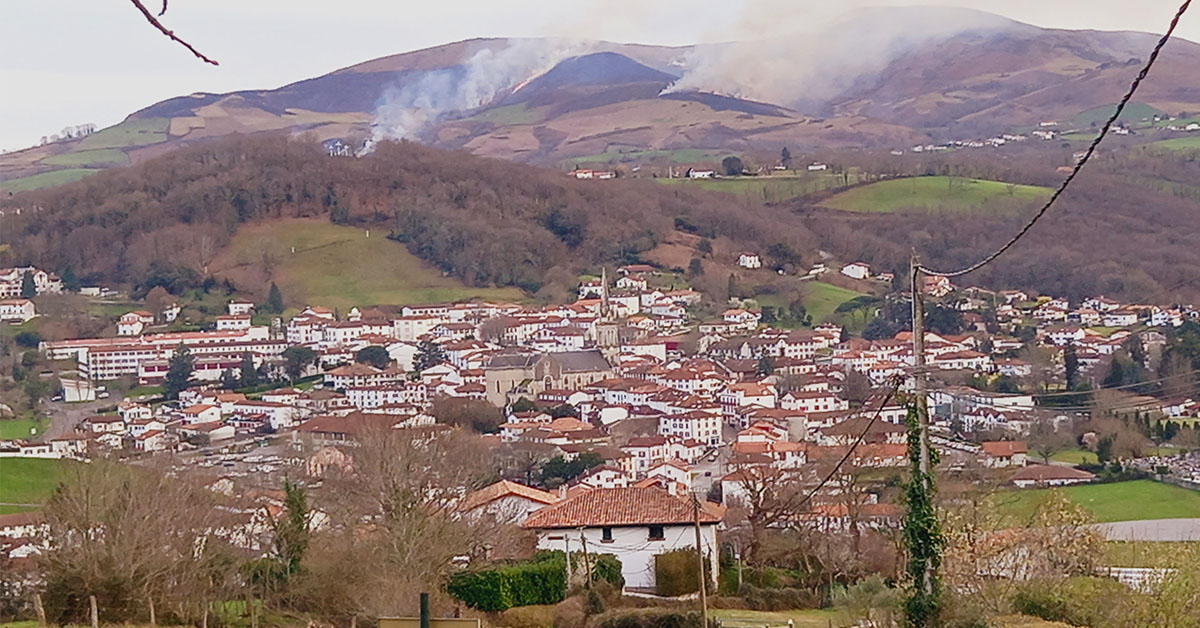Basque ethnography at a glance
Anybody who visits us in winter will see the uplands of Iparralde (Northern Basque Country) ablaze. The fires are used to manage and clear the pastures and meadows for the livestock. Given the small size of the farms in Iparralde, they need to graze their animals on the surrounding uplands. Accordingly, the farmers care for and attend to the uplands in the same way as they do with their farmsteads. In general, they use fire to clear those areas which cannot be reached with machines.
Fire is used for different purposes.
The first is to produce fodder for the livestock. The land would be covered in brambles if not controlled by fire. By contrast, if fire is used properly, the grazing land is increased significantly, which means that farmers have to buy in less fodder.
The second goal is stewardship. In the case of small holdings, farmers care for the land for future generations even if some areas are not used. They know that if they let the vegetation grow, the future owners will find it hard to convert those areas back to grazing.
The third reason is related to European subsidies, which require a series of environmental and economic goals to be met and the farmers need the funding.
The last may be for aesthetic reasons. Some farmers want to keep the surrounding area clear, as has always been the case. Even though they do not need pastureland, they continue with the tradition of burning thickets and brambles to keep them under control.
Farmers use the mountain areas from May to November. They are common land. Consequently, the upkeep of that land is also community based. Four or five people, with the authorisation of the local council, usually oversee the lighting and control of the fire.
The fires are not lit haphazardly; they require knowledge and skill:
– Knowledge of the vegetation to know how frequently the clearing has to take place.
– The weather, particularly the wind, has to be taken into account.
– Farmers must have tools to control the fire (shovels or brooms).
– In the run-up to the fire, the boundary vegetation has to be cut back and a type of earth wall built to limit the fire from spreading. Some people even first burn the area where they want the fire to stop.
– Some farmers control the fire from top to bottom, and others do the opposite. The third technique involves setting the fire shrub by shrub, in other words, burning small areas here and there.
The winter fires also influence the type of landscapes. They result in different types of grasses adapted to the needs of the livestock.
The impact on the animals of the areas where the fires are set is not as obvious, perhaps due to the lack of research. The fires do not seem to directly reduce the animal biodiversity, as they are lit in winter, when there is a lack of animals and the ground is damp. That was the conclusion of a report by Euskal Herriko Laborantza Ganbara (ilovepdf_BIBLIO-URL_FUSIONNÉ_VF.pdf (ehlgbai.org)).
Of course, this traditional practice has its supporters and opponents. As can be seen in the report, there are no binary reactions. In February 2000, the very serious accident on the slopes of Mount Ezterenzubi sparked a controversy. There has been much greater control of this custom since then.
Pantxix Bidart Pla


